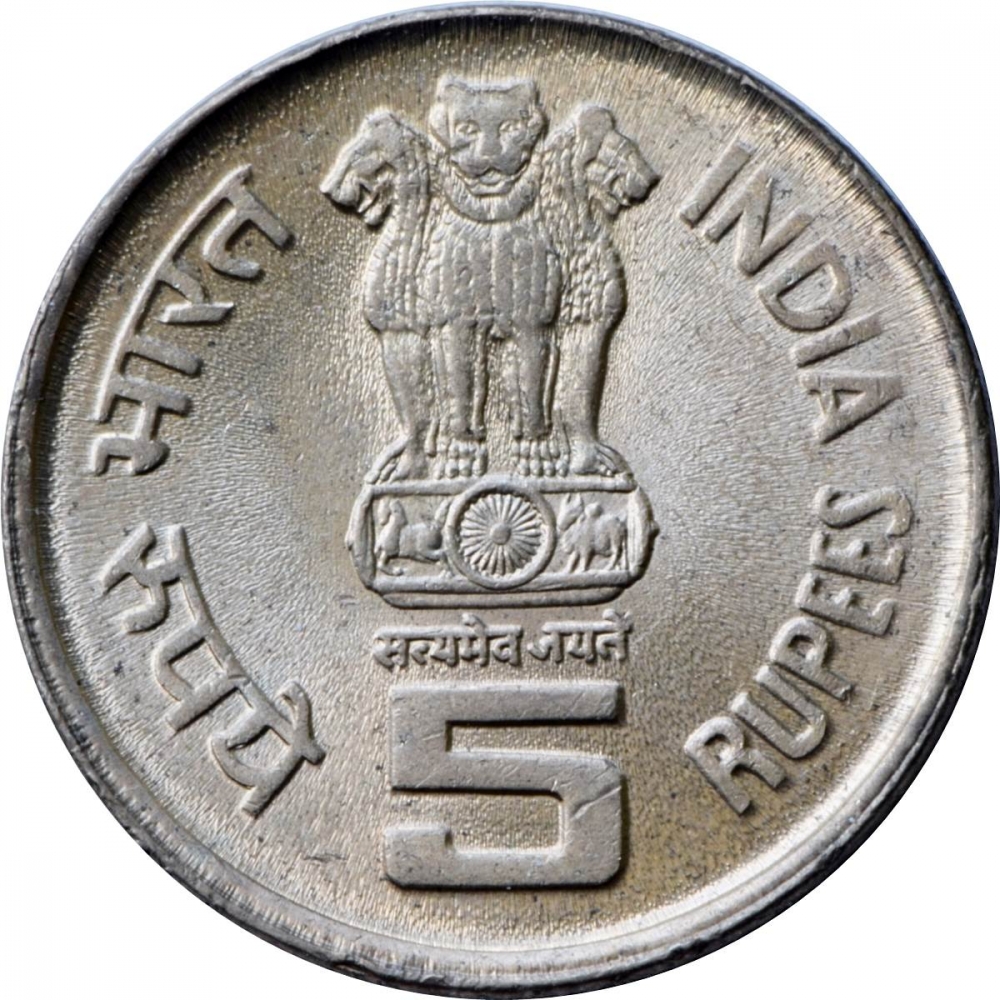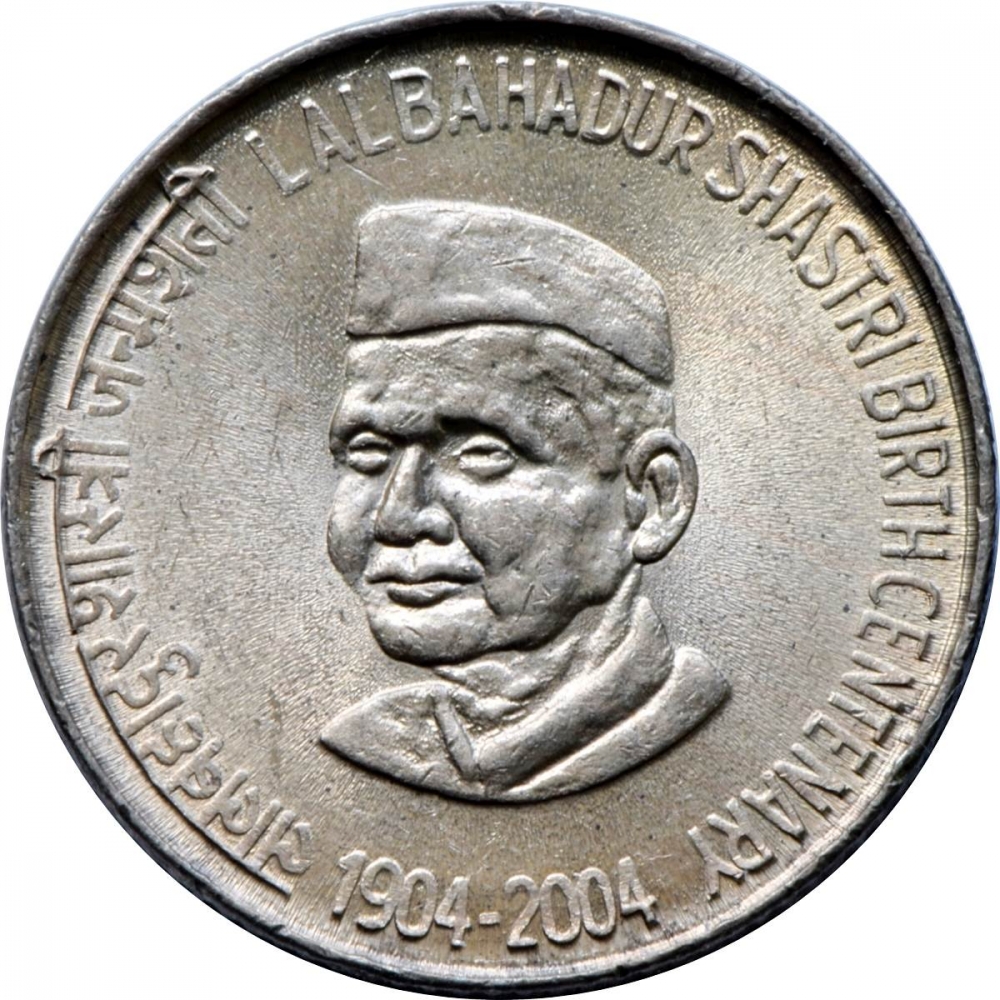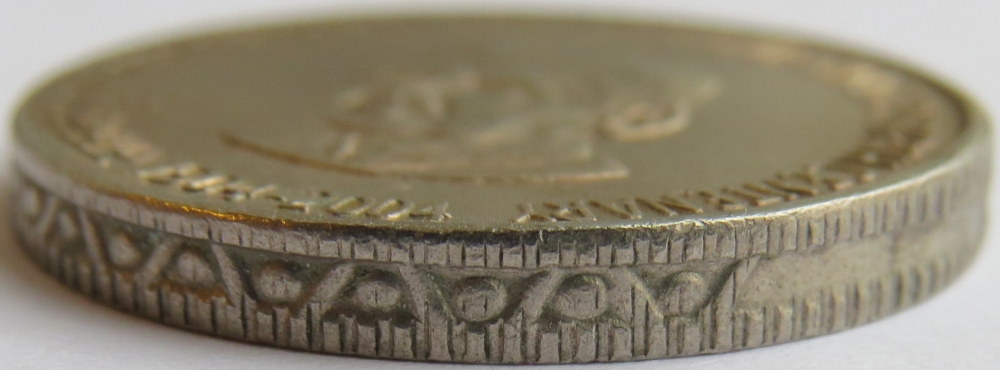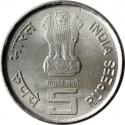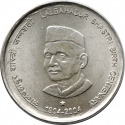You are about to finish your registration. Please check your mailbox (including spam folder). There should be a letter with a confirmation link. Check setting to make sure that your e-mail address is correct.
Send letter again
Obverse

|
Depicts the State Emblem of India with Satyameva Jayate below surrounded by the country name and value. भारत INDIA |
|---|---|
Reverse

|
Bust of Lal Bahadur Shastri 3/4 left. लालबहादुर शास्त्री जन्मशती |
| Edge |
5 Rupees
Non-magnetic
KM# 329
Characteristics
| Type | Commemorative Issue (Circulating) |
| Material | Cupronickel |
| Weight | 9 g |
| Diameter | 23 mm |
| Thickness | - |
| Shape |
|
| Alignment | Medal |
| Mint |
Calcutta Mint (no mintmark)
|
